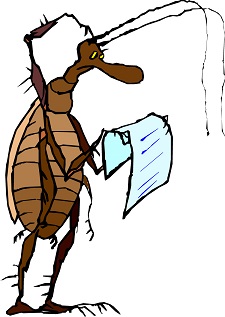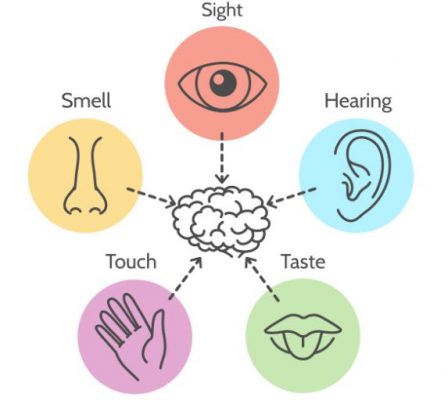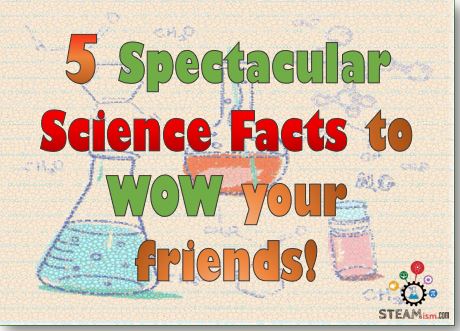The DNA in your body can stretch from the Sun to Pluto and back — 17 times

As Discover magazine says, “Don’t try this at home.” Or anywhere in our Solar System! There are roughly 37 trillion cells in the human body. The human genome is the genetic code in (of these 37 trillion) human cells. Each genome contains 23 DNA molecules, each of which are 1.7 to 8.5 cm long when uncoiled, with an average of about 5 cm. So, if you were to uncoil all of the DNA encased in each of these cells (23 molecules x 5 cm. x 37 trillion) and put them end to end, then these could be stretched from the Sun to Pluto and back 17 times! Mind blown!
Venus is the hottest planet in the Solar system
Even though Mercury is the closest planet to the Sun, the award for “Hottest Planet in the Solar System” goes to our neighbor, Venus!
The atmosphere of Venus made up mainly of carbon dioxide and it is surrounded by clouds of acids. These “acid” clouds are so thick that little light even reaches the surface of Venus. The little light that does manage to reach the surface is converted to heat and can not escape the atmosphere. This makes Venus the hottest planet at around 500°C!
Cockroaches have been around longer than dinosaurs and may just out-survive all of us on Earth!

So, cockroaches – first thing that comes to mind when we think of creepy-crawlies, right? Creepiest of the crawlies, if you ask me (that image up there was the only one I found that I could look at without being grossed out!) …
Turns out the earliest cockroach found are from the Carboniferous period 320 million years ago! To compare, Dinosaurs lived between 230 and 65 million years ago, in a time known as the Mesozoic Era. This was many millions of years before the first modern humans, Homo sapiens, appeared.
Also, cockroaches have survived nuclear explosion, microwave ovens, and the harshest of winters, even though they are tropical creatures.
Can we re-define resilience to just say cockroaches?
Woodpeckers heads sustain forces equal 1200 times the force of gravity while pecking wood

Woodpeckers range from tiny birds 7 cm in length to much larger ones, more than 50 cm in length.
They forage for food (insects) in the trunks and branches of trees, and often communicate by drumming with their beak. They mostly nest in holes that they peck in tree trunks. They have strong beaks for drilling tree trunks, and long sticky tongues for extracting food.
Researchers have found that when woodpeckers peck on wood, their heads sustain forces equal to 1200 times the force of gravity! This has led to more research on these tough little birds, with focus on why and how these birds manage to avoid concussions or any other degenerative diseases of the brain. This research may eventually help medical researchers figure out how to treat or prevent these diseases in people who work in dangerous fields like mechanical work or sports that are prone to head injuries.
We humans have more than 20 senses (not just 5)

Sense is defined as, “a faculty by which the body perceives an external stimulus.” The nervous system has a sense organ, or sensor, dedicated to each sense.
Did you learn in school, like I did, that we only have five senses – those of sight, sound, touch, smell, and taste? These are the 5 basic or traditionally recognized senses. In reality though, we may have between 13 to 20 scientifically proven senses.
Some examples of non-traditional senses include –
- Equilibrioception – or the sense of balance, allows us to sense body movement and direction and maintain our balance. The sensor for this is found in both of the inner ears.
- Thermoception – or the sense of external temperature. The sensors are located in the skin.
- Proprioception – is an odd one, it’s the ability to know where your body parts are in relation to other body parts, even when you can’t see them. Neurologists test this sense by telling patients to close their eyes and touch their own nose with the tip of a finger.
- Nociception – is the ability to recognize pain or physical damage to your body.
Want the full, gory (nah, just kidding) list? – Wikipedia’s got it
- An Interview with the Co-Founders of Dermanostix - August 14, 2020
- NASA & SpaceX’s Successful Space Launch - June 12, 2020
- Types of Engineering - June 10, 2020

![By NASA (http://photojournal.jpl.nasa.gov/catalog/PIA00104) [Public domain], via Wikimedia Commons](https://upload.wikimedia.org/wikipedia/commons/thumb/8/85/Venus_globe.jpg/256px-Venus_globe.jpg)